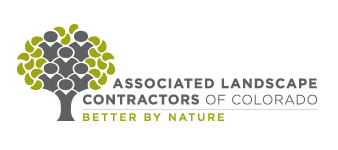| 3 things that will make or break your landscape company in 2021 |
 |
| Written by Colorado Green NOW |
| Tuesday, February 09, 2021 02:00 AM |
|
The initial shock faded, and many landscape companies enjoyed a busy, successful summer. However, as the long-term economic impact of the pandemic has yet to be unveiled, business leaders must embrace agility and proactivity to survive and thrive in the aftermath of COVID-19. As business leaders establish initiatives for the coming year, we remind companies that the path to recovery requires reinvention in three key areas: cash, throughput, and people. Cash In the face of economic uncertainty, a cash reserve is a life raft, enabling companies to fulfill their debt obligations amidst fluctuations in revenue. While companies often focus on profit as the primary indicator of financial health, 70% of companies that go bankrupt are profitable when they close their doors.3 Therefore, landscape companies must shift their focus to enhancing their cash position. Near-term approach: We recommend that landscape companies maintain enough cash on hand to cover a minimum of three months of operating expenses. For example, if a company has monthly operating expenses of $25K, then it should maintain a $75K cash balance. This same three-month rule can be applied for available credit via a line of credit, credit cards, or other credit sources. If saving three months of cash is not attainable, we recommend that companies boost their access to available credit to compensate for the shortfall and have a six-month buffer. For example, if a company with $25K in operating expenses only has $25K in cash on hand, they should have access to five months of credit. Long-term, strategic approach: Covering a cash deficit with credit is a short-term antidote to financial distress. Positioning businesses for long-term liquidity requires landscape leaders to consider the strategic levers that can be pulled to increase cash: A) boost profitability through sales growth, pricing adjustments, or cost reductions; B) sell unproductive assets (equipment); and C) secure a loan or sell equity in your business. Companies can then monitor cash flow by updating their financial forecasts to account for working capital and capital expenditures. Throughput When operating in an environment with capacity restraints, a severe labor shortage and global supply chain disruption, maximizing throughput is essential. Throughput, a key indicator of efficiency and performance, refers to the gross margin your company earns over a specified period. The speed at which work is completed determines when revenue is recognized, and when profits are captured. We recommend that companies combine throughput with other indicators, such as cash flow, to evaluate projects. By considering price as a function of time when prioritizing jobs, landscape companies can preserve their limited resources for the projects that enable them to efficiently maximize their financial outcomes. People Remaining profitable, productive and cashflow positive requires an effective skilled labor force who can deliver on the job. Therefore, our final recommendation is to focus on you people. Attracting, engaging, and retaining the talent necessary to get the work done requires landscape companies to focus on their people just as much as their financial statements. Amidst a sharp rise in business bankruptcy and soaring unemployment, employees are apprehensive about the future. Instilling confidence in your workforce can be achieved by transforming into a company of the future. Refining processes and updating technology to drive efficiency can engage employees. Investing in your people through training and development sends a message about what your people mean to the business. Engaging employees in the strategy conversation and aligning them around a shared purpose can inspire confidence and motivate them to strive for your organization’s long-term vision. While financial stability is imperative to your business, do not allow your people to take a backseat to the numbers. The three essential areas – cash, throughput, and people – are inextricably linked. As companies gear up for 2021, focusing equal attention on the three success drivers will be the key to innovation, resilience, and success. Steve Coughran is founder of Coltivar, a transformation-focused company with the technology, training and financial expertise to unlock value and accelerate time to results in organizations. He is passionate about solving complex and challenging problems, and has advised and served clients across many segments of the construction industry including: contracting, infrastructure, renewable energy, and real estate. 1 “Landscaping Services in the US Market Size 2002-2026” Ibisworld, October 10, 2020. This article originally appeared in the January/February 2021 issue of Colorado Green. Read more in this issue of Colorado Green NOW: |


